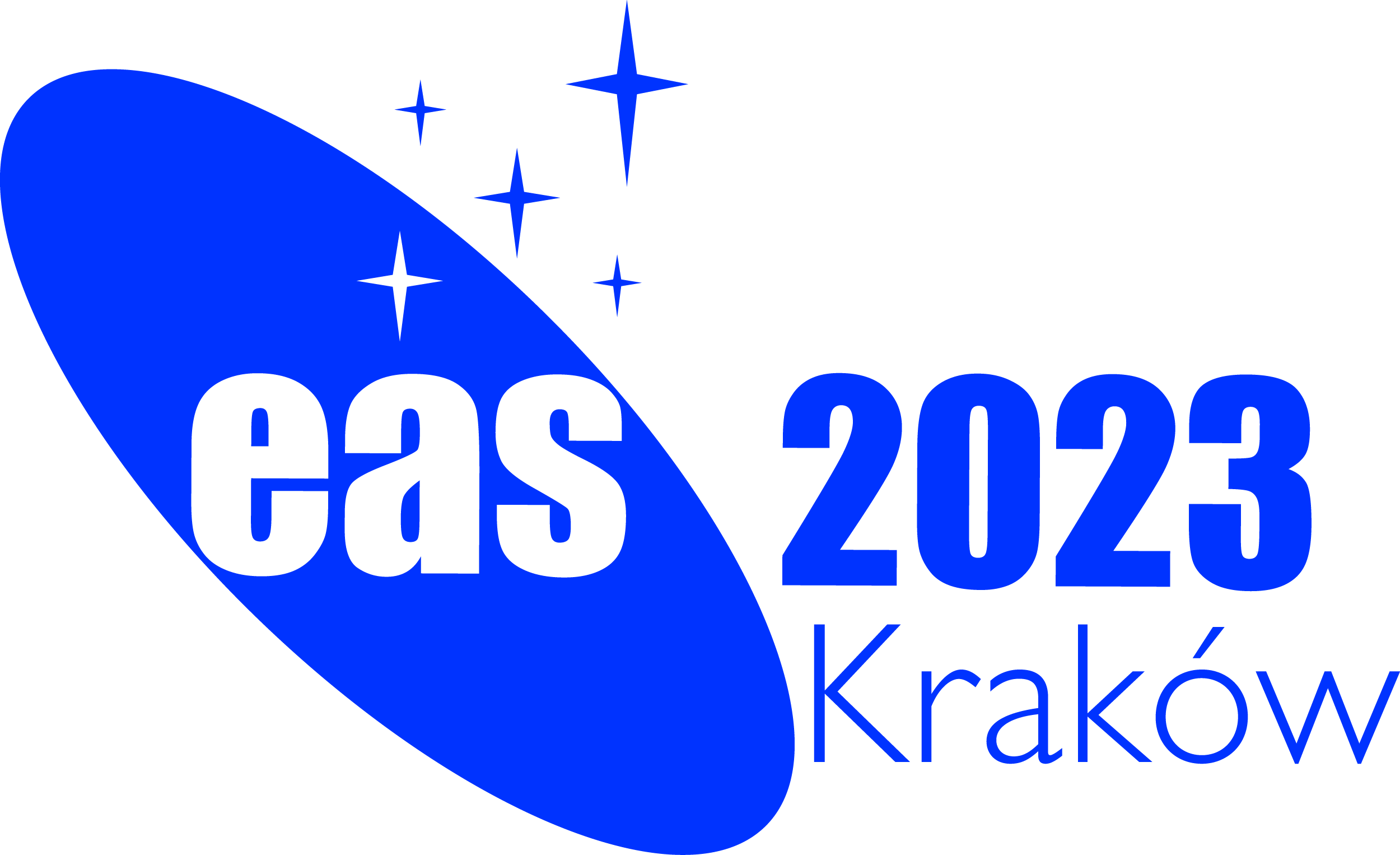Special Session SS18
14 July 2023
The outer Galaxy as a template of low-metallicity environments

Aims and scope
The outer Galaxy provides a unique opportunity to study the impact of metallicity on star formation at a spatial resolution sufficient to resolve individual clumps and cores within giant molecular clouds. The metallicity declines in the outer Galaxy and is between that of the Large Magellanic Cloud and the inner Galactic disk. The gas disk starts to both warp and flare just outside the Solar circle, suggesting that dynamical processes might affect molecular gas in different ways than inside the Solar circle. The mass surface density of molecular clouds and their number for a given volume is lower in the outer Galaxy, resulting in fewer cloud-cloud collisions. The reduced abundances of dust and molecules heavier than H2 affect the overall gas and dust cooling budget. The cosmic ray flux and UV radiation field strengths are lower, but penetrate deeper into the clouds due to less shielding. The differences in environmental conditions and the high fraction of atomic-to-molecular gas are expected to lower the star formation per surface area. Altogether, the outer Galaxy clouds operates under vastly different conditions than in nearby molecular clouds, and are likely dominated by the effects of lower metallicity, which is typical for many extragalactic environments.
While most CO surveys have focused on imaging the inner galaxy (e.g. the 1st and 4th Galactic quadrants), we are now starting to obtain a high-resolution view (below the arcmin resolution) of the CO emission in the outer Galaxy too. Regarding the 3rd quadrant, the on-going Outer Galaxy High Resolution Survey will provide an unbiased view of the CO isotopologues emission at a resolution below 30'' (e.g. Colombo et al. 2021). OGHReS will cover 100 square degree between 180 < l < 280 deg. The 3rd quadrant has been the target of other CO surveys covering smaller areas (typically between 190 < l < 220 deg), mostly conducting with northern antennas (such as FUGIN, Umemoto et al. 2017; CHIMPS2, Eden et al. 2021; FQS, Benedettini et al. 2021). Historically, the molecular gas properties of the outer Galaxy have been inferred from observations of the 2nd Galactic quadrant conducted with the FCRAO telescope (e.g. Heyer et al. 2001, Wienen et al. 2021, Dame & Thaddeus 2022). In addition, the MWISP project will provide an almost global view of the molecular gas in the Milky Way, covering more than 2000 degrees, and spanning all 2nd quadrant and large part of the 3rd (up to l=250 deg; Yang et al. 2019).
During EAS 2023, data from several CO and high density gas surveys will be available. Given the renewed interest in the outer Galaxy, it is an ideal moment to gather the international astronomical community to raise awareness of existing data, especially among European astronomers from underrepresented communities who will be able to benefit from the released survey data. The goal of the meeting is to present the latest results in the outer Galaxy research, and to discuss how to best interpret the observations in the context of modeling efforts and comparisons with extragalactic studies.
The scientific goals of the session include the presentation of the recent advances in the large-scale surveys of the outer Galaxy and their comparisons with state-of-the-art models of Galactic structure. The physical and chemical properties of star-forming regions will be discussed with particular reference to low-metallicity environments, and put in the context of their extragalactic counterparts.
Programme
- Large-scale surveys of the outer Galaxy and the simulations of the Galactic structure
- The impact of environment and metallicity on star formation
- Molecular clouds and star formation in low-metallicity extragalactic environments
Invited speakers
- Ana Duarte Cabral (Cardiff University)
- Ortwin Gerhard (MPE Garching)
- Andrea Giannetti (INAF)
- Natsuko Izumi (ASIAA, Taiwan)
- Carsten König (MPI for Radio Astronomy, Bonn)
- Suzanne Madden (CNRS)
- Snezana Stanimirovic (University of Wisconsin, Madison)
Scientific organisers
M. Benedettini (INAF-Roma), L. Bronfman (Universidad de Chile), D. Colombo (University of Bonn), N. Evans (University of Texas), J. Jose (IISER Tirupati), A. Karska (chair; Nicolaus Copernicus University in Torun and MPI for Radio Astronomy, Bonn), K. Menten (chair; MPI for Radio Astronomy, Bonn), N. McClure-Griffiths (Australian National University), T. Moore (Liverpool John Moores University), A. Pettitt (California State University, Sacramento), E. Rosolowsky (University of Alberta), M. Rubio (Universidad de Chile), T. Shimonishi (Niigata University), J. Urquhart (chair; University of Kent), J. Yang (Purple Mountain Observatory CAS)
Contact
Dr. Agata Karska (agata.karska @ umk.pl)
Updated on Wed Feb 08 11:10:43 CET 2023
|

 A power cut will shut down all EAS services on Tuesday, 10 January 2017 starting at 7:30 CET.
A power cut will shut down all EAS services on Tuesday, 10 January 2017 starting at 7:30 CET.


